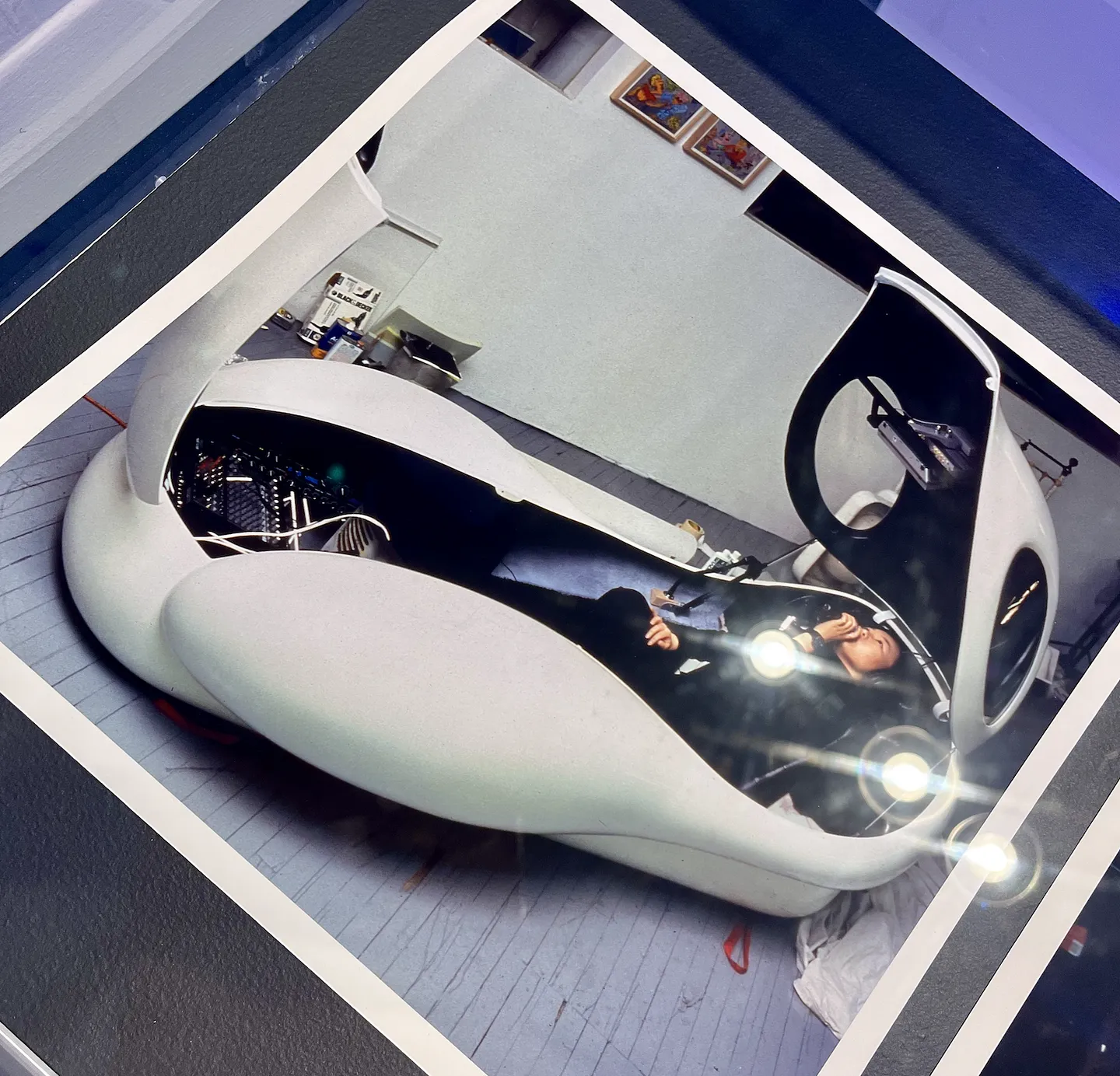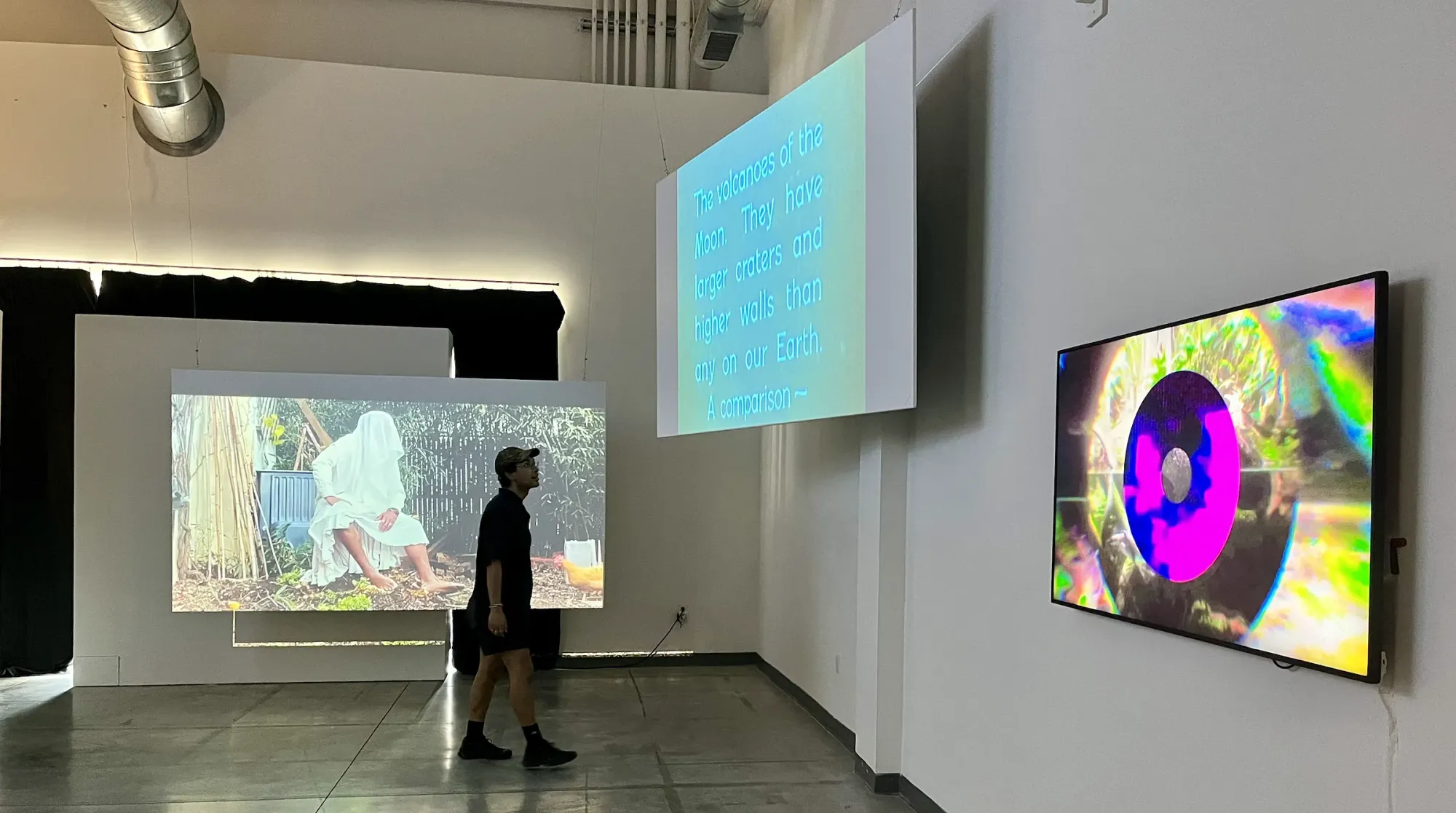Dream House: Inside Music + Video
Asian Arts Initiative
1219 Vine St.
Philadelphia
Through Aug. 3, 2024
At the exhibit Dream House: Inside Music + Video, I found myself surrounded by a series of screens and sounds. Spinning in circles, searching for a way out of the constant clash, I also sought answers: What was the experimental art show’s speakers trying to say about the effect of mixing sound and visuals?
The show is happening now at the Asian Arts Initiative, an arts center located in Chinatown North that houses exhibitions, performances, artist residences, youth workshops, and community programming. Curated by Joyce Chung with assistance from Dominique Chua, the exhibit is inspired by La Monte Young and Marian Zazeela’s 1962 installation by the same name, Dream House.
At Asian Arts Initiative, Chung has put a twist on that idea by updating the project with more modern mediums. The new exhibit zooms in on the various definitions and immersive properties of music videos.
At first, amid all the simultaneously playing screens, I figured the show’s curator was attempting to point out the ways that music has been commercialized and branded, ultimately absorbing our attention through an agoraphobic light and replacing our abilities to critique and contest with an addictive desire to dissociate from the real world.
I scoped out a map I had been given upon arrival at the gallery and found written overviews of the 11 videos included in the show. It turns out all were thoughtfully chosen examples of recently released works by artists of color as well as local creators that serve as foils to the kind of interpretive limitation posed by, as the exhibit aptly refers to it, the “definitive picturization” of video.
The chosen videos showcase some of the diverse approaches towards producing comprehensive artworks that combine animation, documentary, photo collage, and virtual reality at the intersection of film and sound.
A wall inside the gallery names that idea almost verbatim. One decal reads that “the exhibition sheds light on how music and videos create a new sense of artistic attunement without compromising their integrity and principles to the corporate music establishments. Each work reveals the ways in which artists use this new form of art to express their gender and sexuality, challenge societal norms, and examine the notions of diaspora, tradition and culture.”
I came upon Alex Da Corta’s video for Philadelphia artist Tierra Whack’s song, “27 Club.” I’d never seen that particular video before, but I had definitely watched Whack’s series of 30-second videos filmed to accompany her album of one-minute songs, Whack World. When that album came out, I was amazed by Whack’s ability to put out smartly written and catchy song bytes using creative constraints, like time limits, to her advantage. “27 Club” joins dark lyrics centered on the suicidal nature of producing music for the masses with visual technology that shows Whack trying on live motion masks. The masks, distorted versions of her own face, look real, but are obviously superficially imposed, showcasing the confusing blend of authentic identity and deliberate branding that make up celebrity.

In a second room, I found microphones set up to sing along with a selection of songs, a station to play Dance Dance Revolution, and archival design materials from Lee Bul’s “Live Forever” concept, which imagines a private karaoke pod built like a race car.
I latched onto that apparent tension between public and private, as embodied through the individual artist and translated through the highly hypnotic sensibilities of film. And the whole show started to make thematic sense.
Unlike the original Dream House, which created an immersive space for patrons to pay attention to the mathematical elements of electronic drone music, this interpretive exhibit makes it difficult to zone in on the artistry behind each artwork, instead focusing on the concurrent promotional capacities of the music video, which is all-consuming even when highly human-centered.
The structuring of the screens such that the sound collided in the center of the room, with the music behind certain videos totally silenced, made it impossible to unpack all of the messages of the videos included in the show. The room pushed me away when I tried to soak in all of the sounds at once.
What’s ironic is that the space is not necessarily conducive to the kind of immersion described in Chung’s artist statement: It’s too busy operating as an otherwise enveloping and ever-developing space for the community at large. It was too difficult to move through the space sincerely, as was instructed. Kids busy engaging in enriching activities in nearby rooms peered into the karaoke parlor to see where the source of the amplified, off-pitch singing sessions were coming from, and I likewise wondered what they were learning in their next door worlds.
I enjoyed playing a part in a space that welcomed everyone into a world of all-inclusive artwork, without losing sight of the fact that the stream of all-immersive, virtual world building that’s taking over our physical realities is not all there is to life.
But maybe I’ll just have to go rent my own private race car — and park it somewhere where I can watch the free library of videos compiled by Chung in peace and silence, before screaming the lyrics out loud with my eyes wide shut.
NEXT:
Dream House: Inside Music + Video, remains open and free to the public through Aug. 3. The gallery is open Tuesdays, Thursdays and Saturdays between 2 and 6 p.m.






